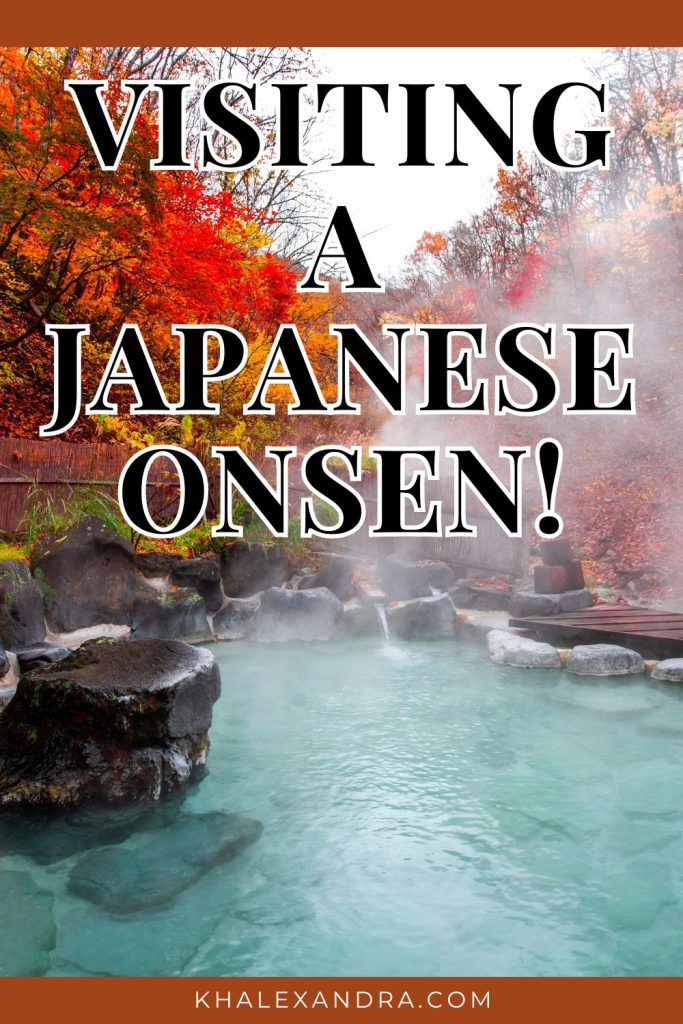Visiting a Japanese Onsen
This post may contain affiliate links, which means I'll receive a small commission if you purchase through my links, at no extra cost to you. Please read full disclosure for more information. Your support is appreciated!.
The following symbol may look familiar to you, but you may not know its actual meaning:
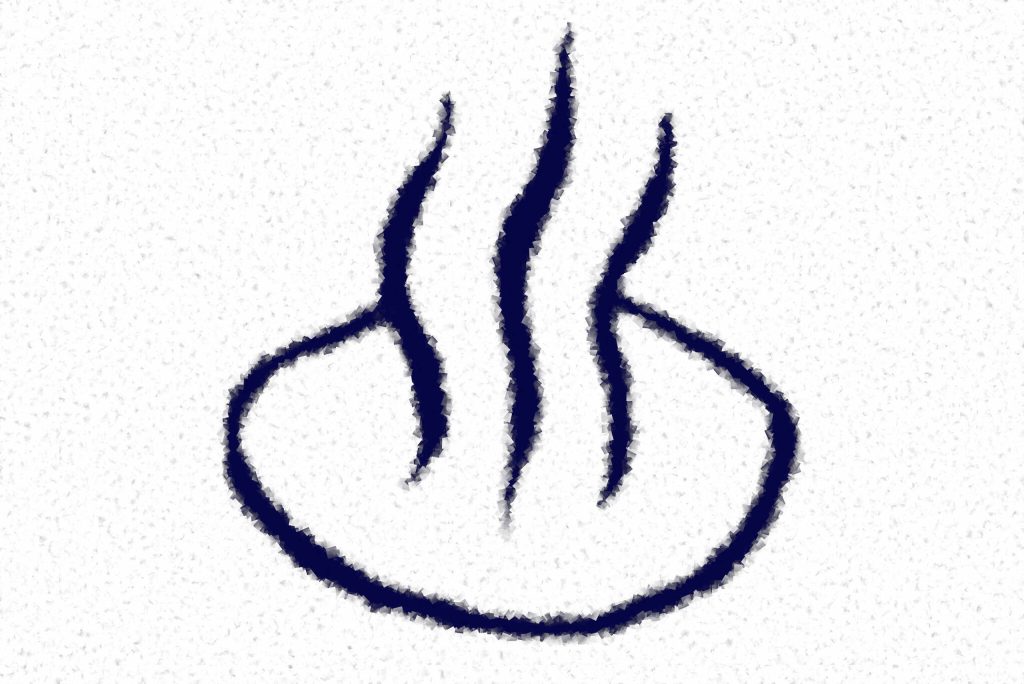
This circle containing steam rising up, is the symbol for “onsen (温泉)” or “hot water spring” in Japanese. There are nearly 30,000 natural hot springs across Japan due to the volcanic nature of the island.
If you’re thinking of visiting a Japanese Onsen or Hot spring, here is some helpful information for you.
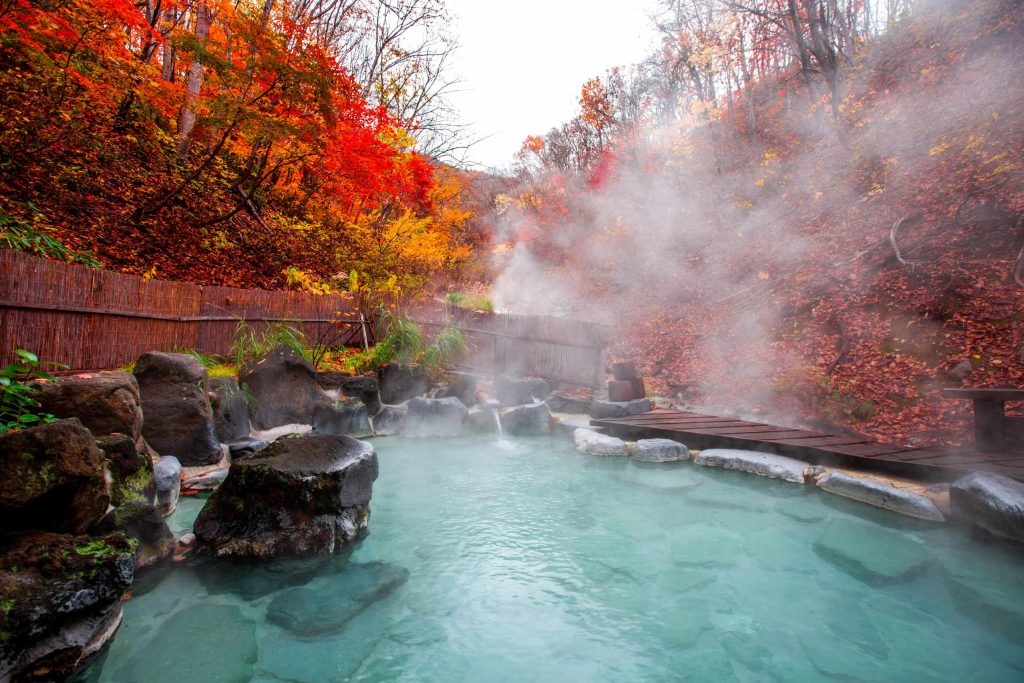
Not only is an onsen a hot spring but it is also a bath house in Japan. Onsens are very popular in Japan. No clothing is allowed (these bathhouses really are for bathing!) but onsens are strictly separated into men and women’s baths.
Occasionally, a non-nude onsen which allows towels (and mixed gender) can be found.
There are also a few onsen resorts for families across Japan, which allow bathing suits.
Built over natural springs, onsens can be indoor or outdoor, with most containing both.
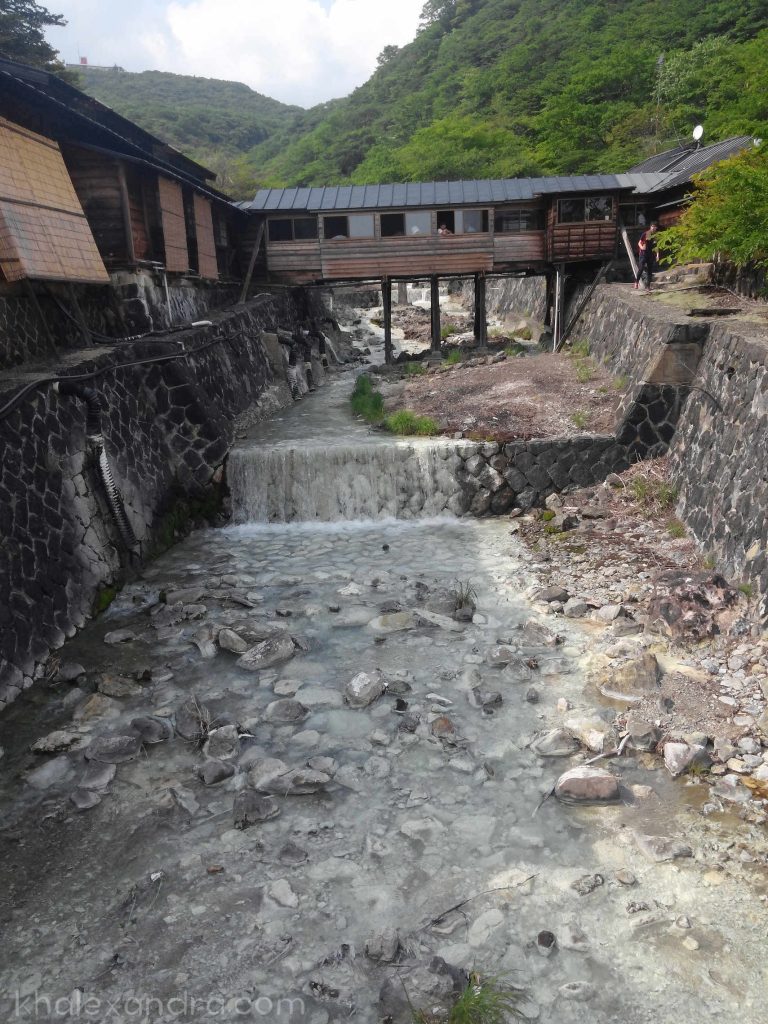
Most non Japanese visitors can look at the onsen like a day at the spa.
Onsen vs Sentō
An onsen (温泉) uses natural hot spring water, whereas a sentō (銭湯) (meaning hot bath) uses tap or well water. Both are public places, where you can go not only to bathe but to relax.
Of course, onsen water is natural and may be scented differently and contain minerals which are more beneficial to the body and the skin. However, sentōs often add minerals to the water as well.
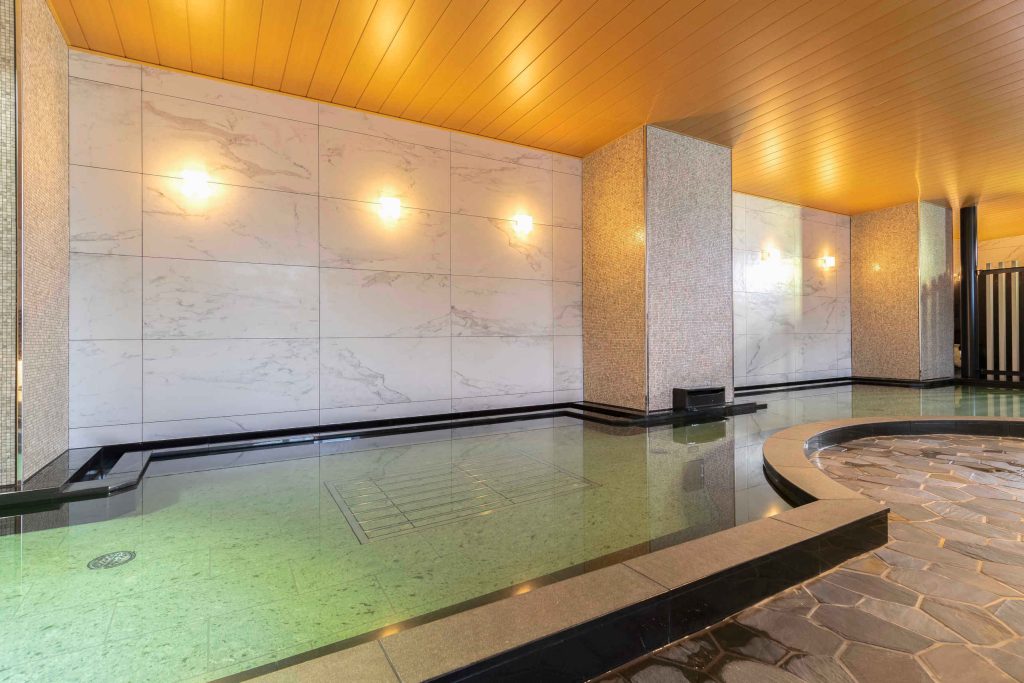
Sometimes the water can get very hot. The bath waters in the Shika no Yu onsen in Nasu can range from 41-48 degrees Celsius (that is around 105-118 Fahrenheit), so take care if your body is not used to the heat. Fainting is not unheard of, so it is best to gradually get your body used to the hottest water.
Here is a helpful article on different types of water you can find: A Guide to Onsen Water Types.
How to Go to an Onsen
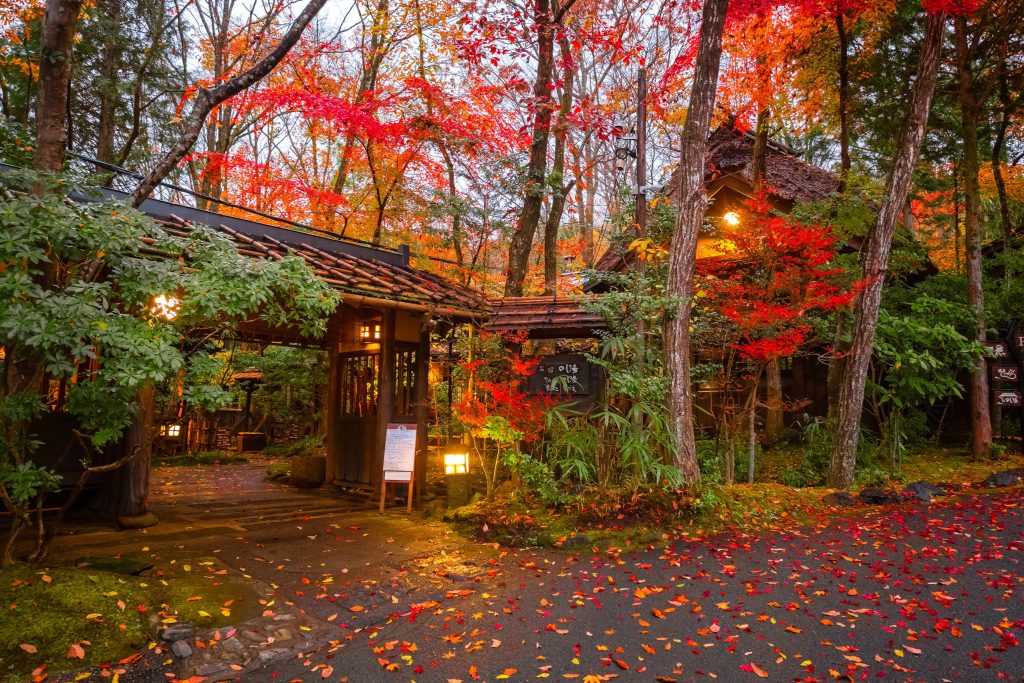
Onsen towns like Kurokawa in Kumamoto prefecture are tourist attractions and very pleasant to visit. However, there are onsens and sentōs in most towns and cities as well as rural areas. Of course you will see the onsen mark when visiting an onsen for bathing.
Many onsens look like a shop on the inside, selling gifts, and some onsens also serve food and drinks. Most hold tatami rooms for relaxing as well, and for waiting for your friends and loved ones to come out.

Don’t Forget to Put on the Slippers!
Upon entering, you will take off your shoes and put on slippers. Don’t worry, there will probably be other cutsomers there, just observe where they put their shoes. There are usually areas with lockers and a shelf with slippers, so you can bring some coins with you if you want to lock up your things. Then you will pay at the desk to bathe.
After you pay at the desk, you will see flags that look similar to these:


Sometimes the flag will have the onsen symbol but generally they are red for women and blue for men. This kanji: “ゆ” means hot bath. Sometimes the flags will contain the kanji for woman: 女 and the kanji for man: 男.
If you plan to visit on onsen, you may want to bring a change of clothes, a small towel for the onsen, and a large towel to dry yourself afterward.
Shower First
It is customary to wash yourself before entering into the water. I have seen people wash their hair before entering or after. However, long hair should not touch the onsen water, it should be tied up. To wash yourself, there are showers like these:
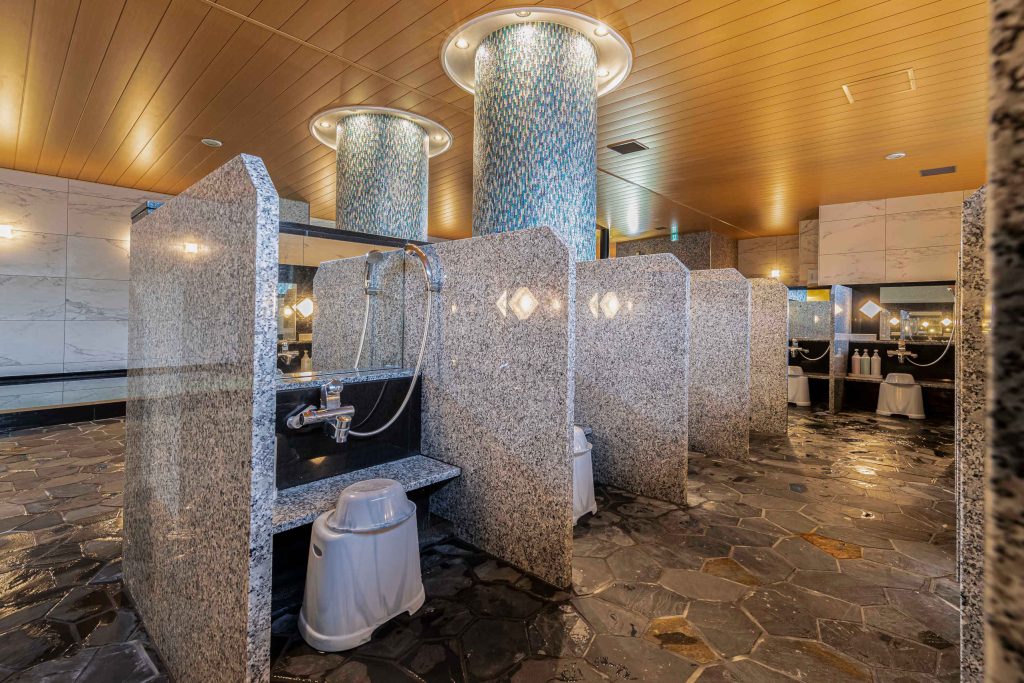
As you can see, the showers in the onsens are often cubicles, and many contain shampoo, conditioner, and even facial soap for you to use. However, many people bring their own toiletries. There are stools to sit on while you bathe, and a small plastic senmenki (洗面器) or wash basin, which can be used to rinse yourself.
You will also rinse yourself after coming out from the onsen waters.
Small towels (the size of a hand towel) can be used to cover yourself, but they are not to get into the onsen water. They can rest on the top of the head or be set on the ledges of the pool. (If you accidentally get them in the water, it is okay). This towel can be used to wipe off excess water, so that you are not soaked and dripping when going back to the dressing area.
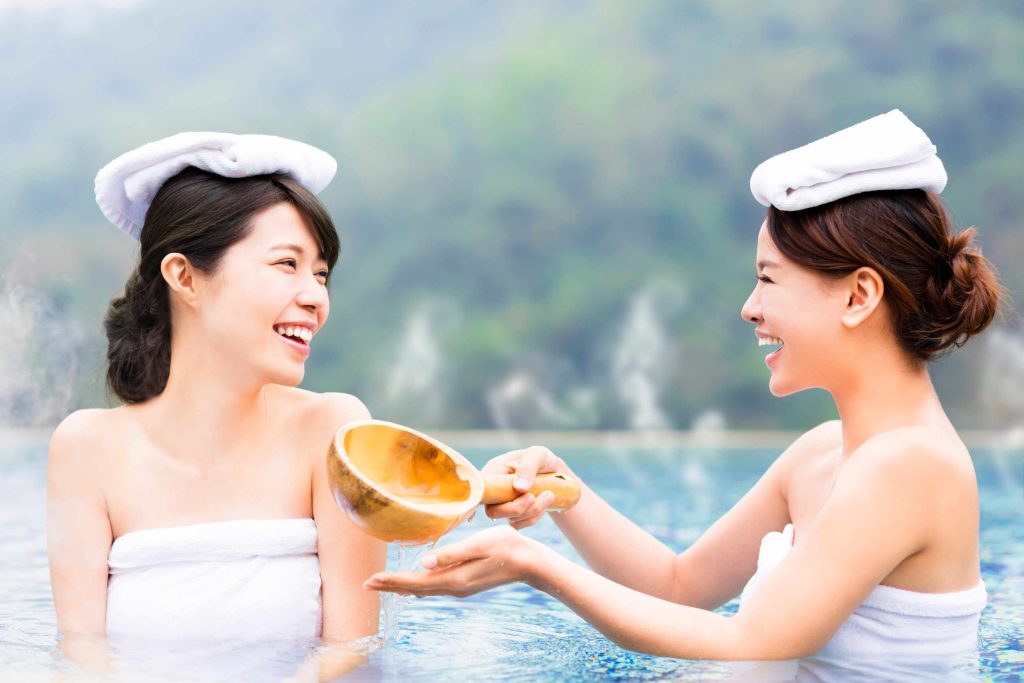
Sometimes the dressing areas of the onsen provide hair dryers for your convenience, as well as scales to weigh yourself, and mirrors.
Etiquette
Rinsing the shower stool with the senmenki bucket or wash basin for the next person is polite. It is expected that everyone leave the cubicle the way that they found it.
Most onsens prohibit patrons with tattoos. Check with the particular onsen if you have a tattoo.
As mentioned, do not go into the dressing area dripping wet.
Also, rowdy behavior and loud noise is not tolerated since onsens are places where people go to relax.
Although I have heard that drinks should not be brought into the onsen, I have seen bottled drinks for those spending time in the sauna. It may depend on the onsen if drinks are permitted.
Alternative Ideas
Foot Onsen or Ashiyu (足湯)
If you still do not feel comfortable going to the public bath onsens to bathe, there are many foot onsens like the following. Some of these foot baths are free, while some have a small fee. These foot onsens generally use natural water and they can also be very hot. The blue hose in the following picture is for cooling the hot foot bath with cold water:
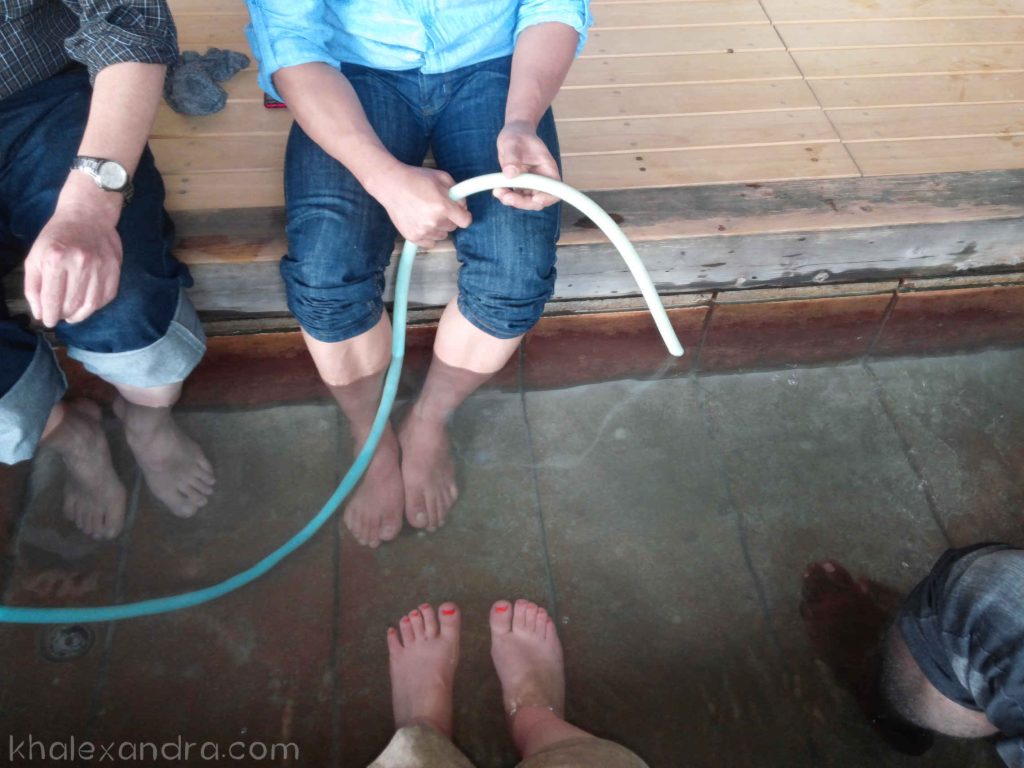
The following is a larger foot onsen in the Nasushiobara area. Here you can rest on the benches while soaking your feet. Also, there are different levels of heat in this onsen.
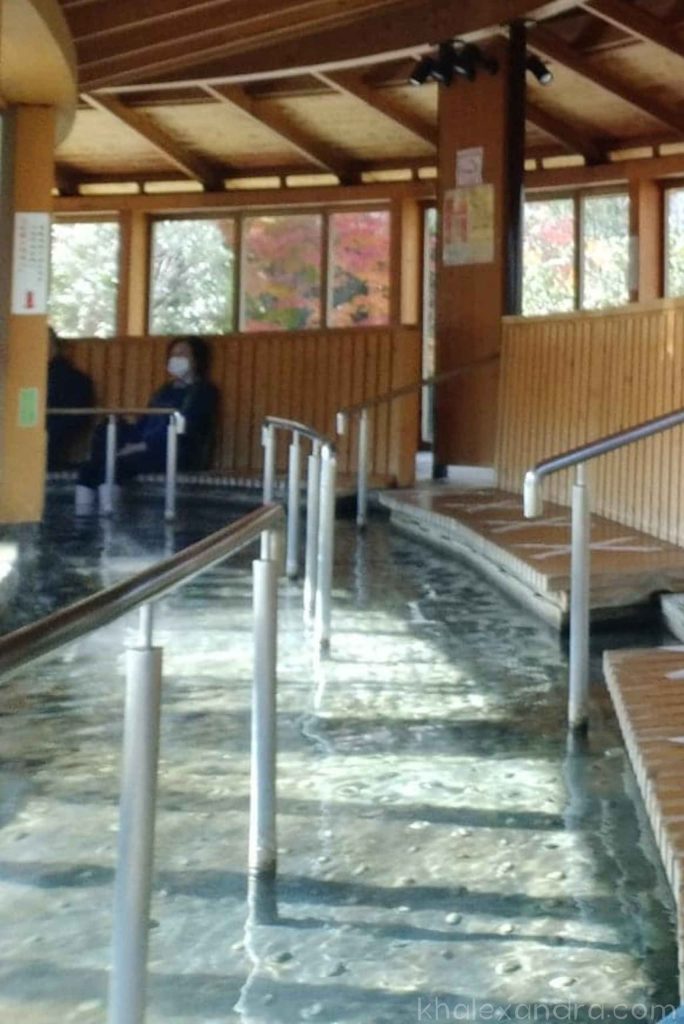
See my post on Beautiful Places to Visit in Eastern Japan
Stay at a Ryokan
A ryokan is a hotel where you can stay and sometimes you can get a room with a private onsen. This may be desirable if you still do not feel comfortable with nude public bathing or if you’d like to go with your spouse.
Here is a video with information on staying at a Ryokan, which will be very helpful if you decide to stay in one.
If you decide on visiting a Japanese Onsen or hot spring, it will be an adventure! Happy Travels!
